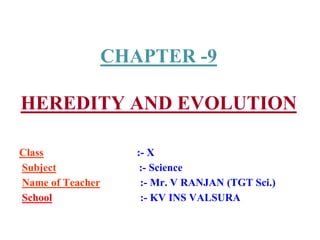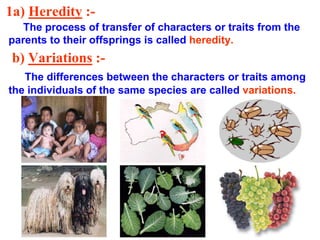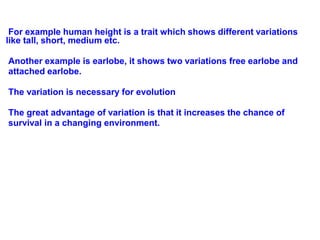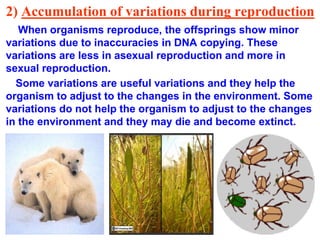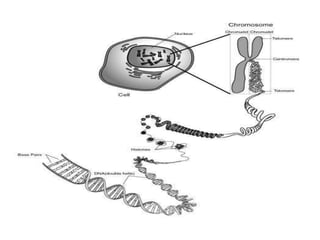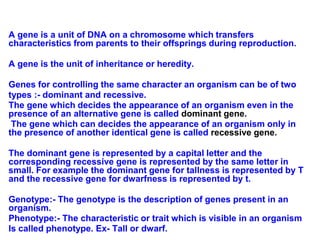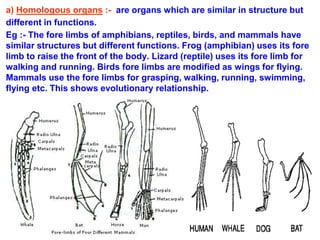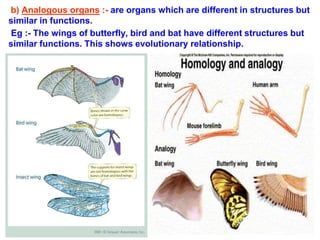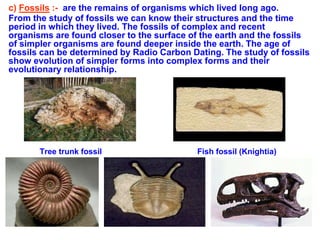1. The document provides information about heredity, variation, Mendel's experiments with pea plants, evolution, and human evolution.
2. Mendel conducted experiments with pea plants involving monohybrid and dihybrid crosses to study patterns of inheritance. His experiments showed dominant and recessive traits are inherited in predictable ratios.
3. Evolution occurs through natural selection acting on genetic variations over many generations, leading to the formation of new species. Evidence for evolution comes from homologous and analogous structures as well as fossils.
